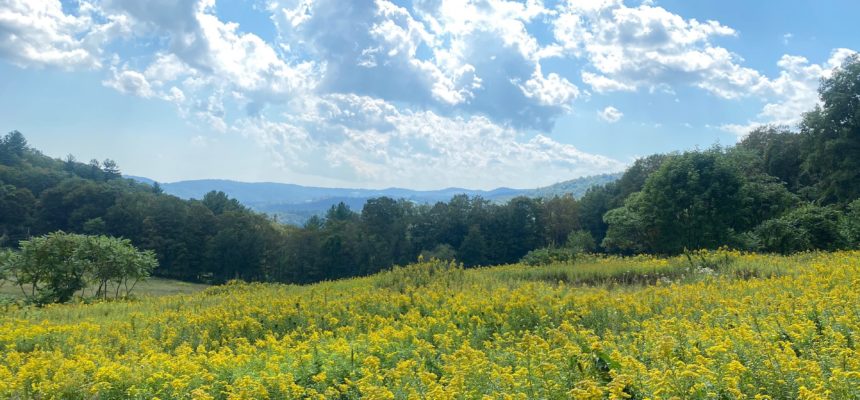
Bonnyvale Environmental Education Center (BEEC) is located within the homelands of the Abenaki people, who have lived here for thousands of years. We express gratitude for the example of their ongoing reciprocal relationships with the Land.
The story of this land can be traced back 350 million years to a warm, shallow tropical sea. The sea bottom silts and coral became the soft, brown, calcium-rich bedrock that forms the foundation of this land. If we leap ahead to a much more recent time period, in 13,000 B.C. as the most recent glaciers receded, ice sheets left erratic boulders of granite and gneiss at BEEC. This land was home to wolves and cougars, and flocks of passenger pigeons darkened the skies.
BEEC is located within N’dakinna, the ancestral homelands of the Wôbanaki, for whom the land “is regarded as animate, communal territory, supporting both human and non-human inhabitants in reciprocal social and spiritual relationships… Creation stories relate how all the living beings, including the awaasak (animals), namasak (fish), sipsak (birds), abaziak (trees), nebisonsizak (medicine plants), and other beings agreed to live in a reciprocal relationship, sharing their resources with the alnobak (human beings).”
By the 1600s over 10,000 indigenous people lived throughout N’dakinna. Abenaki people hunted, fished, foraged and practiced agriculture in ways that nurtured ongoing abundance. They used controlled burns to create pasture, encourage growth of nut trees and browse, and for other purposes. Diseases brought by Europeans in the early 1600s, upended Wôbanaki lifeways and killed 95% of coastal New England native people. Abenaki people in our region continued to be displaced from their traditional homelands by European settlers through force and treaties, which were often negotiated under unfair or coercive terms. Many of the specific stories of the land that is now BEEC are unknown to us today, but were likely part of oral histories and other forms of knowledge that were uprooted.
We don’t know when the first settler-colonists began homesteading this land, but if you look hard enough, you will find dates carved into boulders in the woods nearby that go back as far as 1799, and it is likely that the BEEC farmhouse was built during this era. Settlers cleared the land and built stone walls for sheep, and later barbed wire fences for cows, pastured in the hills. Families farmed the land, sugared the maple trees, and cut ice from the pond in winter. Apples, peaches, chestnuts, corn and other crops were grown and harvested. Paul and Dorothea Stockwell purchased the land in the 1950s. Paul was a poet, scientist and teacher. Dorothea was a therapist, educator, and musician. Their commitment to education and community provided the hearty acorn from which BEEC has grown.
The Stockwells had a strong desire to share their land and buildings with the community. They founded BEEC’s predecessor organization, the Heifer Hill Learning Center, in 1971 to nurture learning on many levels and in many directions. BEEC was founded in 1991 to foster greater awareness, understanding, and appreciation of the natural world and to develop ecologically literate community members. BEEC has a long-term lease through the Earth Bridge Community Land Trust (EBCLT), a small, member-run organization that owns and stewards about 400 acres on 7 parcels of rural land in Windham County, Vermont, and Cheshire County, New Hampshire. BEEC owns and maintains the buildings that once housed the farm.
In November 2022, EBCLT approved a land acknowledgement: Bonnyvale Environmental Education Center (BEEC) is located within the homelands of the Abenaki people, who have lived here for thousands of years. We express gratitude for the example of their ongoing reciprocal relationships with the Land. The statement was written by a committee representing both organizations and in collaboration with Rich Holschuh and Melody Walker Mackin of Atowi, an Elnu Abenaki community initiative.
Today, BEEC, EBCLT, and our community together steward this land. We are in turn nurtured by these forests, meadows, seeps, and ponds.
Note: We recognize that this narrative is incomplete and shared from a non-Indigenous perspective. We are committed to continuing to expand our understanding of the stories that have shaped this land- and each of us.
